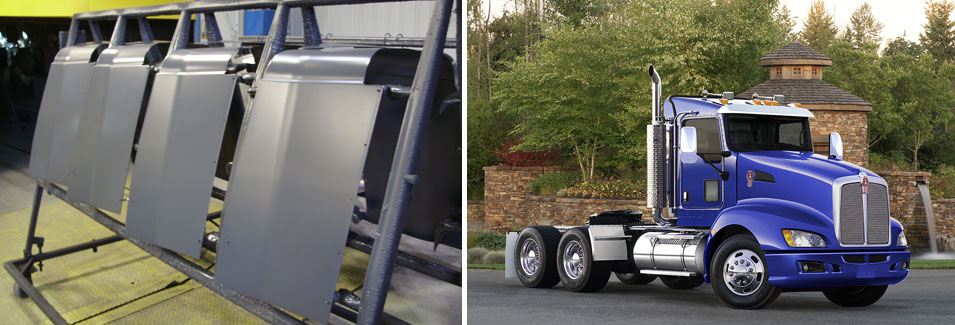RMC’s present capacity in cosmetic and structural SMC parts is being upgraded with the addition of presses that will expand our competitiveness in this arena.
SMC is created by chopping glass roving onto a moving belt of dispensed resin paste, which contains low-profile thermoplastic and mineral fillers. The matrix—sandwiched between two polyethylene carrier films—is compacted, wound onto a take-up roll, & stored to “mature” (thicken).
In preparation for molding, the carrier film is removed and the material cut into measured “charges”. The geometry of the part dictates the shape and arrangement of the charge(s) in a heated, CNC-machined steel cavity mold. The matching core and cavity are brought together in a high tonnage press, whereupon heat changes the viscosity of the charge, and pressure disperses it and the glass reinforcement throughout the cavity. In some cases, the tool is “cracked” open and an in-mold coating—usually primer—is injected under pressure into the gap between the part and the cavity. Post curing prior to painting is a must to ensure trapped styrene has been completely eliminated from the part.
Ribs and bosses can be molded on both sides of the part. Most parts are net shape molded and require little trimming. Class “A” surfaces are the hallmark of this process. Minimum thickness: 2mm. Cycle times range around 2.5–5 minutes “button-to-button”. Tooling is CNC-machined P20 steel, hardened and plated, with costs similar to injection molding; accordingly, minimum economical volume is in the range of 10,000 parts/annum. Pressure is in the range of 1000psi, mold temperature in the range of 300ºF.

